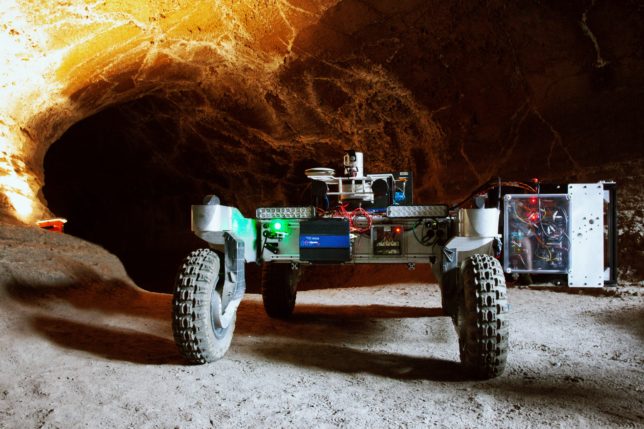
The CaveR rover was originally developed at the NASA Ames Research Center in Silicon Valley for a different project in a Chilean desert. The NASA Atacama Rover Astrobiology Drilling Studies (ARADS) team tested the CaveR rover, then called the KREX-2 rover, in the extreme conditions of the Atacama desert. With a mere 15 millimeters of rainfall per year, 90 degree heat, and extreme exposure to radiation, the Atacama desert is barren, only occupied by microbes. The ARADS scientists used Atacama’s desolation as a simulation for searching for life on Mars.
Searching for life on Mars, similarly to searching for life in the Atacama desert, requires drilling tools, as most life in these arid regions would likely be below ground. The KREX-2 Rover was equipped with a two meter drill which placed samples into three nearby instruments with the help of a robotic arm. These instruments would search the soil for 512 different biological compounds and return the results.
Initial tests on the KREX-2 Rover were successful, and trials are expected to continue through early 2019.
The KREX-2 was designed to allow for future modifications. When the KREX-2 Rover was adapted for the BRAILLE project, a BRAILLE specific instrument pod was added as well as some software changes made.
The KREX-2 Rover is currently being used by the ARADS team, but their work will finish in time for BRAILLE’s 2019 field campaign in August.
